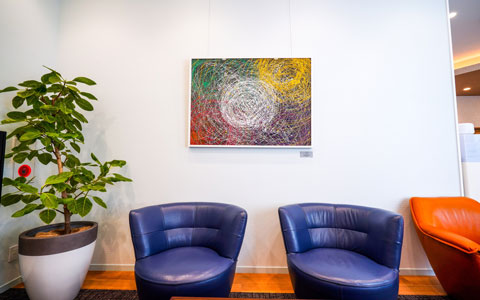EGF receptor signals are very important for maintaining the normal state of the skin. If control of this signal becomes incomplete, various skin problems, such as basal cell carcinoma and psoriasis, may occur.
Furthermore, if EGF receptor signals become abnormally active or mutations occur in the EGF receptor genes, there is a possibility that many types of cancer will occur. Currently, antibodies that neutralize EGF receptors and drugs that inhibit their function are being used as anticancer agents.
However, these drugs have side effects and are known to cause skin issues such as rashes, dryness, itching, and abnormalities in nails and hair.
EGF receptor signals are also necessary for wound healing and play an important role in increasing skin cells and repairing or regenerating damaged skin.
Re-epithelialization is a process to repair damaged skin, where keratinocytes cover the damaged part, restoring its protective function. Both cell proliferation and migration are required for this process, and these abilities may change with aging.
EGF receptors have a role in regulating cell proliferation and migration. When this receptor is activated, the production of a specific protein (collagen type XVII) is promoted, and the cell’s migration ability is maintained.
Therefore, researchers compared the wound healing process between young and old mice. They found that in older mice, the activity of the EGF receptor was reduced, which may be the cause of a failure in re-epithelialization.
Collagen type XVII is involved in the cell’s skeleton and is produced and stabilized by the activation of EGF receptors. If this protein is lacking, the cell’s ability to move is greatly inhibited.
In other words, it is believed that aging reduces the amount of EGF receptor ligands and results in insufficient activation of EGF receptor signals, leading to the degradation of collagen type XVII. This then causes a decrease in the functionality of the cell’s skeleton, inhibiting the migration ability of epidermal keratinocyte stem cells, and resulting in a failure of re-epithelialization.
References:
1) Pastore S. Mascia F. Mariani V. et al.: The epidermal growth factor receptor system in skin repair and inflammation, J Invest Dermatol, 128: 1365-1374, 2008.galat KE
2) Sibilia M. Kroismayr R. Lichtenberger BM, et al. The epidermal growth factor receptor: from development to tumorigenesis, Differentiation, 75 770-787, 2007.
3) Schneider MR, Werner S. Paus R, et al.: Beyond wavy hairs: the epidermal growth factor recep- tor and its ligands in skin biology and pathology.m J Pathol, 173 14-24, 2008.
4) Hynes NE, Lane HA ERBB receptors and cancer: the complexity of targeted inhibitors, Nat Rev Cancer, 5 341-354, 2005.
5) Higashiyama S, Iwabuki H. Morimoto C, et al.: Membrane-anchored growth factors, the epidermal growth factor family: beyond recep- tor ligands, Cancer Sci, 99 214-220, 2008.
6) Lacouture ME: Mechanisms of cutaneous tox- icities to EGFR inhibitors, Nat Rev Cancer, 6:1803-812, 2006.
7) Rheinwald JG, Green H: Epidermal growth factor and the multiplication of cultured human epidermal keratinocytes, Nature, 265 421-424. 1977.






